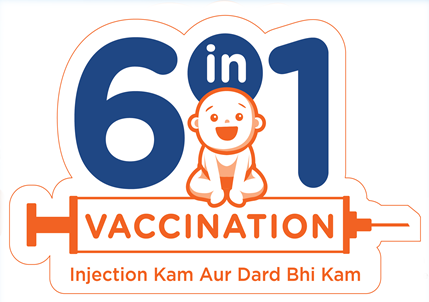

You are now leaving GSK’s website and are going to a website that is not operated/controlled by GSK. Though we feel it could be useful to you,we are not responsible for the content/service or availability of linked sites. You are therefore mindful of these risks and have decided to go ahead.
Agree Agree Agree Stay
Parents can go to great lengths to protect their children and ensure they are healthy and safe from preventable diseases. Timely vaccination during childhood and growing years is crucial because it helps to build a child’s immunity even before they are exposed to infections that could be serious.1
Right from birth, a child could be offered multiple vaccinations for specific age by their doctor based on the local recommendations. Parents maybe sometimes concerned about their child being given multiple injections at the same time. Because of advances in medical technology, combination vaccination is available that combines protection for numerous diseases into a single shot. This way, a child has to take fewer shots and is protected against the same number of diseases— for example, 6 in 1 vaccination.2
In one shot, the 6 in 1 vaccination could protect a child against 6 diseases—polio, pertussis, diphtheria, tetanus, hepatitis B, and Hib (Haemophilus influenza type b) disease. All of these are serious diseases. Polio may lead to paralysis and disability.3 Pertussis may cause respiratory complications, particularly in babies.4 Diphtheria is a serious throat infection that may damage essential organs.5 Tetanus may lead to muscle spasms and difficulty breathing.6 Hepatitis B is a viral infection that affects the liver and may eventually lead to severe liver damage later in life.7 Hib disease may be a mild or severe infection such as meningitis and pneumonia.8 A child could be protected against all these diseases with a single shot.
Speaking about the value of combination vaccination, Dr M Jayakumar Reddy, M.D, Senior Paediatrician, Chennai, said, “Combination vaccination is advantageous because children need to get a single prick, and they are protected against several diseases. As a doctor, I want to ensure that the child is as comfortable as possible. With combination vaccination, a child receives fewer pricks and experiences less pain and discomfort as well. This is also good for parents, who are always worried about the number of shots their child needs during one visit. Overall, it is more convenient, easier, and less painful for all.”
6 in 1 vaccination benefits children and parents. Children could receive fewer injections, which reduces the pain and discomfort they experience because of vaccination. Parents maybe also relieved that their child receives fewer shots. They often do not want their child to get many shots during a single visit and may request their Paediatrician to split the shots into multiple visits. A combination vaccination makes it easier to stick to the vaccination schedule and the process is simpler and more convenient for all.2
For parents worried about the side effects of 6 in 1 vaccination, these are similar to those from individual injections. The swelling or pain at the injection site may be slightly more with the combination vaccination, though it would still be less than the pain of administering multiple injections. Other side effects include fever, irritability, and loss of appetite, which are common to most vaccinations.9
So, if your child is less than 2 months old, consult your Paediatrician for any medical advice and to learn more about the prevention of disease by way of vaccination.
For more information on the diseases and modes of prevention, including vaccination, click here.
References:
